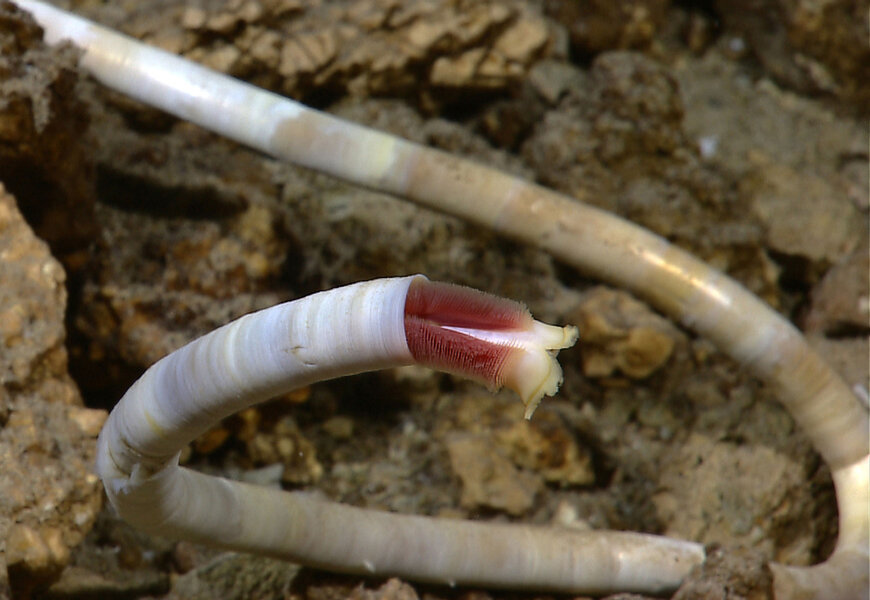Why you should care about Lake Vostok
Loading...
| Washington
If scientists find microbes in a frigid lake two miles beneath the thick ice of Antarctica, it will illustrate once again that somehow life finds a way to survive in the strangest and harshest places.
And it will offer hope that life exists beyond Earth.
Russian researchers reported Wednesday that they had reached Lake Vostok, a pristine body of water untouched by light or wind for about 20 million years. They want to know what type of microbial life — bacteria too small to see — might exist there.
Finding microbes may not sound like much. But they were the first form of Earth life eons before plants and animals existed.
If scientists find these tiny germs in Lake Vostok, it bolsters already strong hope that elsewhere in our solar system, life also might exist where once it didn't seem possible.
There are plenty of examples of life forms existing in the most improbable of places:
—A tiny shrimp was captured on a NASA video floating under thick ice sheets in a different part of Antarctica.
—Tubeworms somehow get needed energy from violent hydrothermal vents in the deepest Pacific and Atlantic oceans.
—A germ called "the world's toughest bacterium" by the Guinness Book of World Records and also termed "Conan the Bacterium" was found 55 years ago in a can of meat. It survives and even repairs itself in radiation that would be deadly to cockroaches.
—In the highly acidic Rio Tinto in Spain, where you dare not stick a hand, life thrives.
—In Chile's Atacama desert, so dry that scientists use it as an analog for Mars, life has been found blowing in the arid wind.
— A microbe was found in a South African gold mine that essentially lives on radioactivity in the mine.
"Everything I've learned shows just how phenomenally amazing life is, certainly its ability to adapt," said Carl Pilcher, who heads NASA's Astrobiology Institute, which studies strange life here and the prospects for it elsewhere.
In fact, scientists are hard-pressed to say where they haven't found life.
"The more we learn about life, the more we learn about its ability to grow and survive and prosper in environments that we formerly thought were too inhospitable," said David Morrison, a senior scientist at NASA's Astrobiology Institute.
University of Colorado scientist Ted Scambos is sure there will be microbes found in Lake Vostok when the long process of examining samples starts — something that may be months away because of logistical problems. He said ice many feet above the lake had bacteria, so it makes sense that the lake does.
Still, what makes Lake Vostok more important than other extreme environments is its incredible isolation.
For example, in Atacama, life probably blew in from elsewhere, NASA astrobiologist Chris McKay said. But Lake Vostok microbes, if found, could not have blown in.
More than 10 million years ago there was little or no ice there, so life could easily have existed then. But with no heat or sunlight after the ice set in, life there now would have had to find another way of getting energy, said molecular chemist and astrobiologist Steve Benner. And that's key.
If life finds a way to adapt to strange conditions in this awful place, why couldn't it live on Jupiter's moon Europa or Saturn's moon Enceladus, scientists ask. Both bodies have water trapped under crusts of ice, just like Lake Vostok, and are both prime targets in the search for life beyond Earth. The big disagreement among scientists is not about the potential for life on those two moons, but which one has the most potential and should be explored first.
It also means Mars could harbor life deep underground, McKay said.
"The broadest lesson that I think we can derive is that given liquid water, life can negotiate just about everything else," McKay said.
So far, except for the surprise shrimp that stunned a NASA Antarctic researcher and the odd tubeworms alongside ocean vents, most of the life forms are so small we can't see them. They are single-cell microbes or a tad more complex.
But that's a big deal because microbes evolve. For 90 percent of the time that life existed on Earth, there were only microbes, said Bruce Jakosky, a professor of geological sciences at the University of Colorado. Microbes are "where we come from," he said.
Jakosky and McKay said it also could eventually mean that life started in more than one place in the universe.
"If there's microbial life widespread throughout the galaxy, that increases the chances that there's intelligent life elsewhere," Jakosky said.
___
Online:
NASA's astrobiology institute: http://astrobiology.nasa.gov







